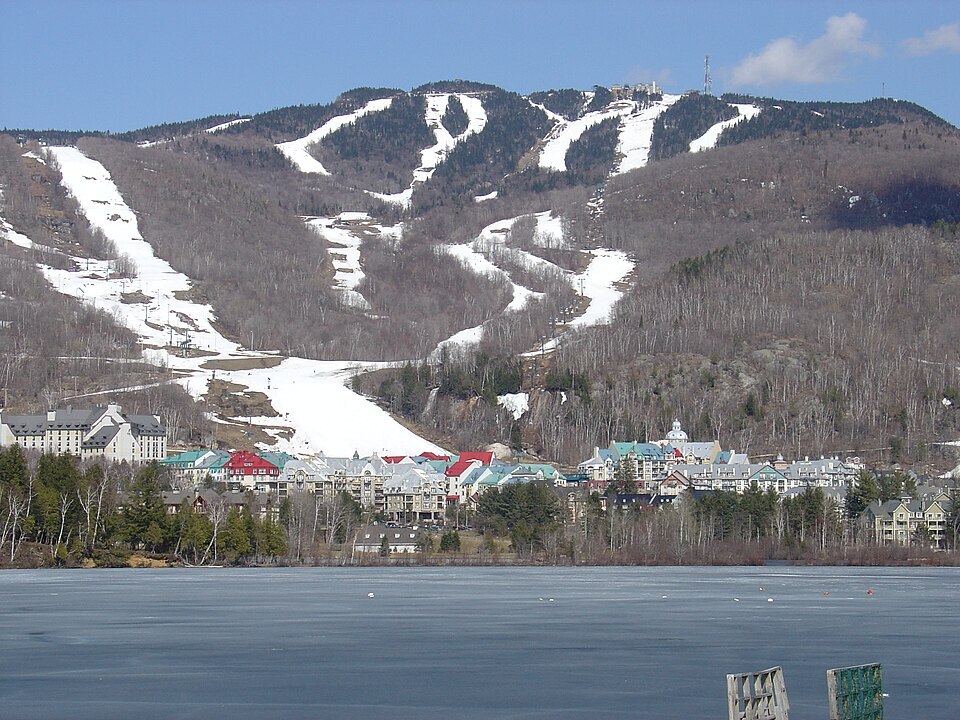The Resort
The eponymous mountain is one of the tallest in the Laurentians, with an elevation of 932m (3,058 ft). The Algonquin name for the mountain is Manitonga Soutana, usually translated into English as the “Mountain of Spirits.” It became “Tremblant” in French. Why? Well, Sir William Edmond Logan, founder of the Canadian Geological Survey, wrote in 1859 that the Algonquins claimed that the mountain rumbled and climbers could feel it vibrating.
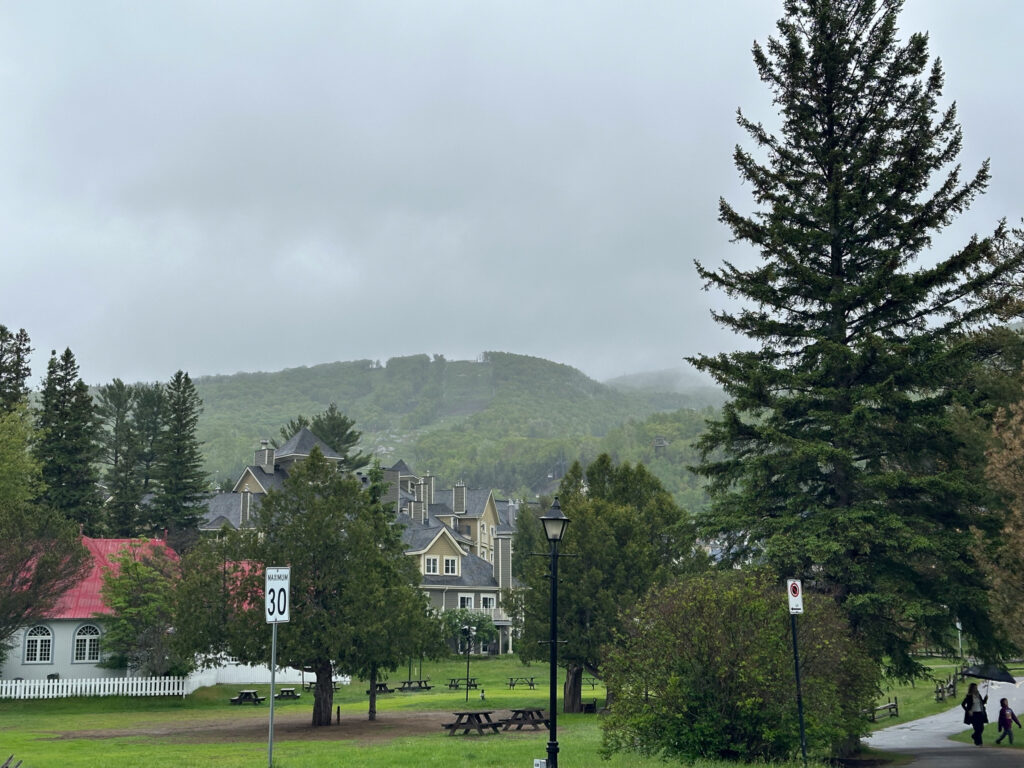
Various explanations are offered for this shaking, although I wasn’t able to find anything that seemed very convincing. Unlike mountains on the west coast, it’s unlikely the name comes from earthquakes, as the Laurentian shield is some of the oldest and most stable rock of the North American craton. Most of the online references refer to the “rushing waters” of the spring snowmelt, or “Indian legends describing the mountain shaking when people violate the sacred laws of nature.” But as these “legends” cited come from oral tradition recorded the 1950s, I’m skeptical.
Anyway, I digress.
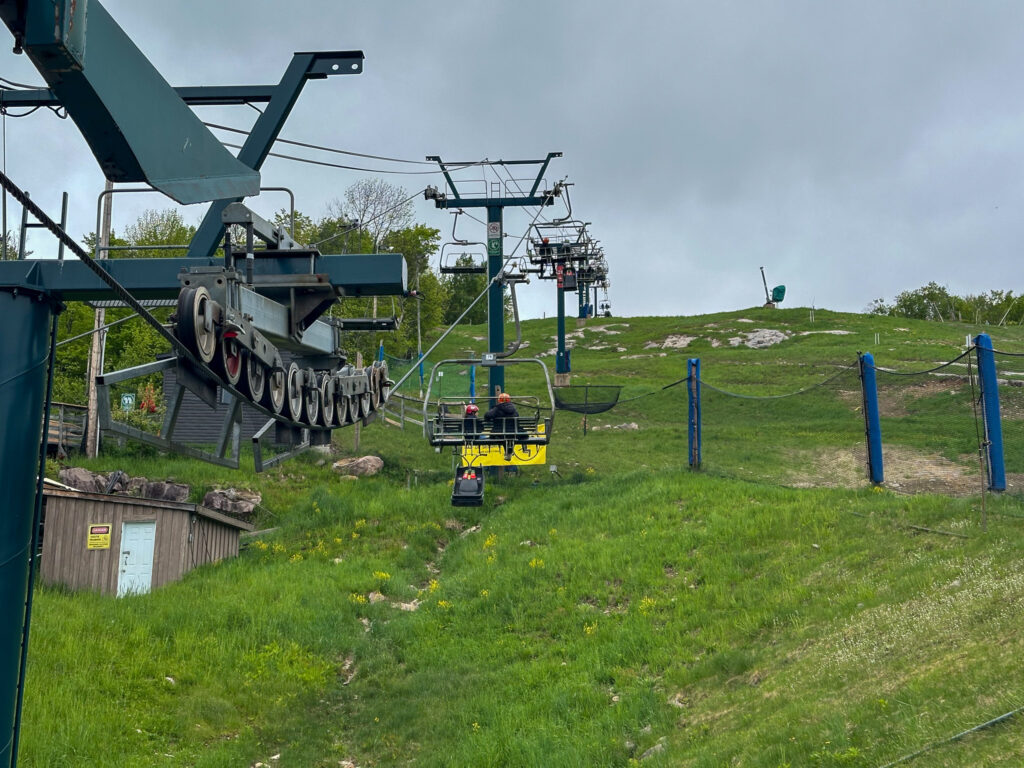
The ski resort at Mount Tremblant dates back to 1939, when the first chair-lift was installed. Over the past eighty-six years, the mountain has grown in popularity, and the resort itself has had cycles of booms and busts. In the 1990s, investors built up the pedestrian village at the foot of the hill (what I called the “upper village” in my previous post). This village has seen major investments since a new owner took over in 2018.
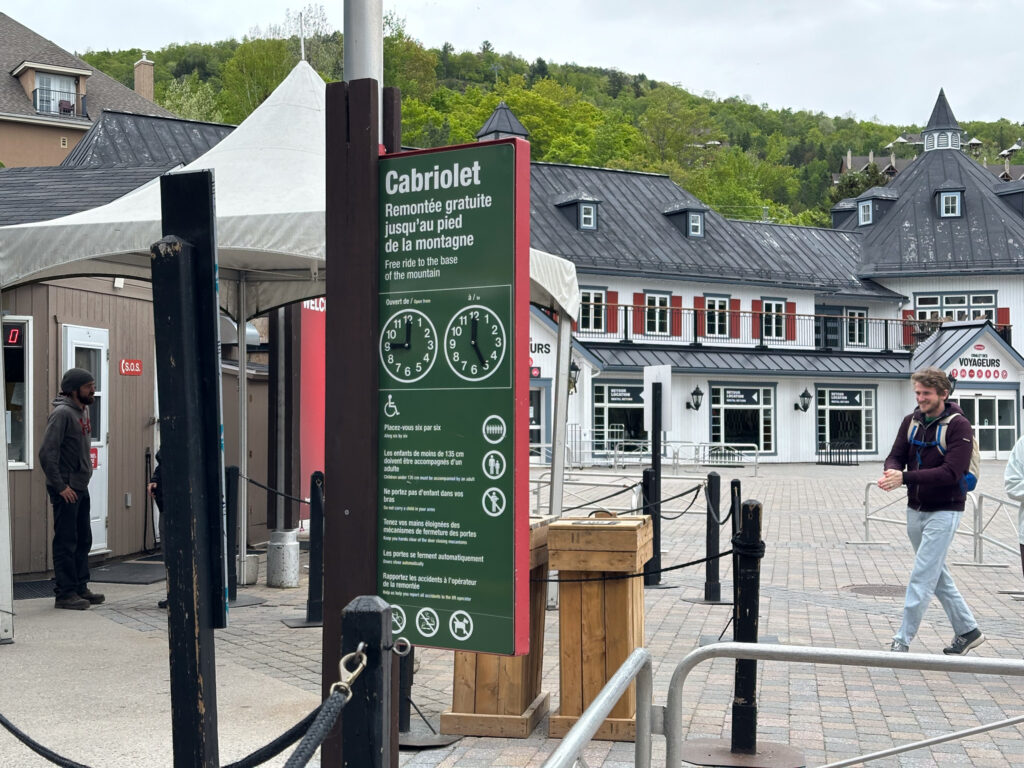
The village is a Disneyland-like collection of hotels, souvenir shops, and lots of restaurants. In good weather, there’s evidently outdoor entertainment too.
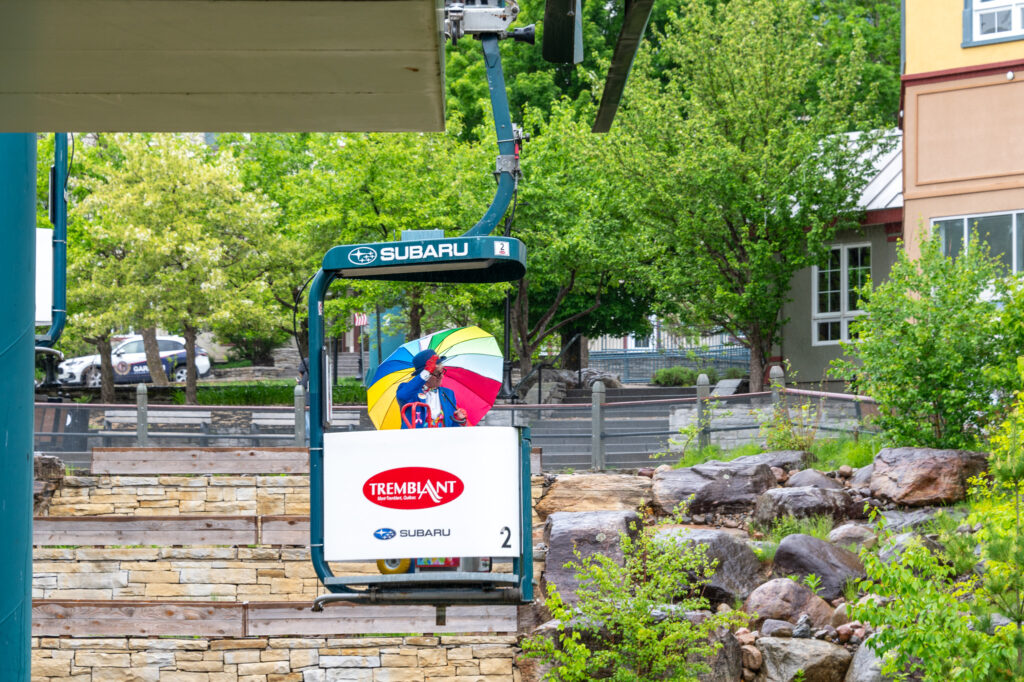
There are all sorts of carnival type attractions (a “Euro-bungie,” summer skiing on artificial turf/beads, gondola rides to the casino, etc).
Manon and I visited the village twice. The first time, we wandered the village for an hour or two before the rain, taking the opportunity to ride The Luge. The Luge are scooter-ish, low-to-the-ground wheeled carts that race down a very curvy paved road… one can get some good velocity. And if you’re Manon, you can go bombing down at crazy speed, yelling “allons-y!” while swerving and weaving through crowds of astonished youths.
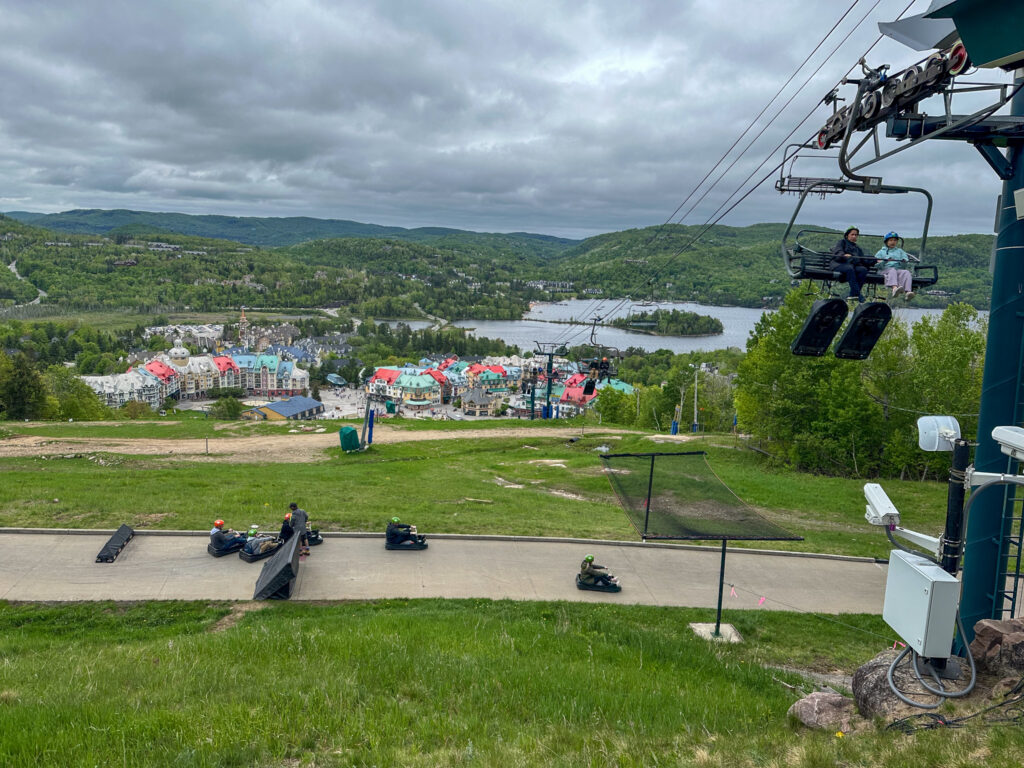
After the Luge, we ate the lunch we’d brought in some chairs by a un-necessary (and non-operating) water/splash feature.
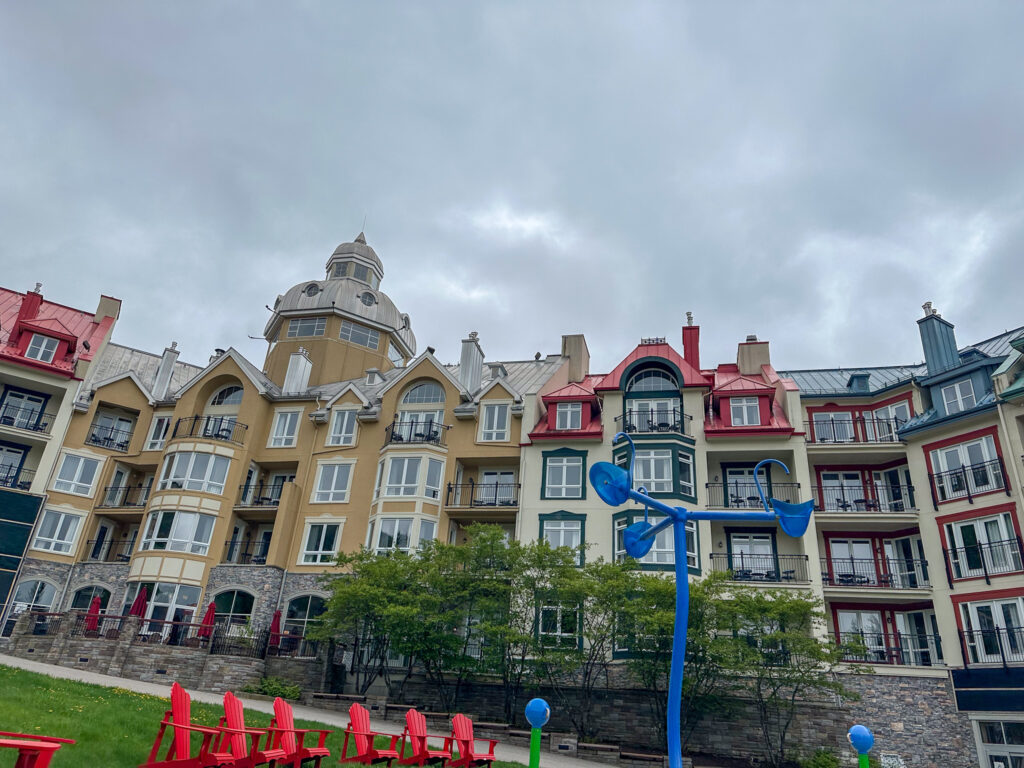
On our second visit, we looked at the various restaurants in the village but given the rain and concerns about indoor dining with crowds, didn’t stop. We did, however, admire the SoCal Kitchen, which featured tacos on the menu and a damp and bedraggled robin on the sign.
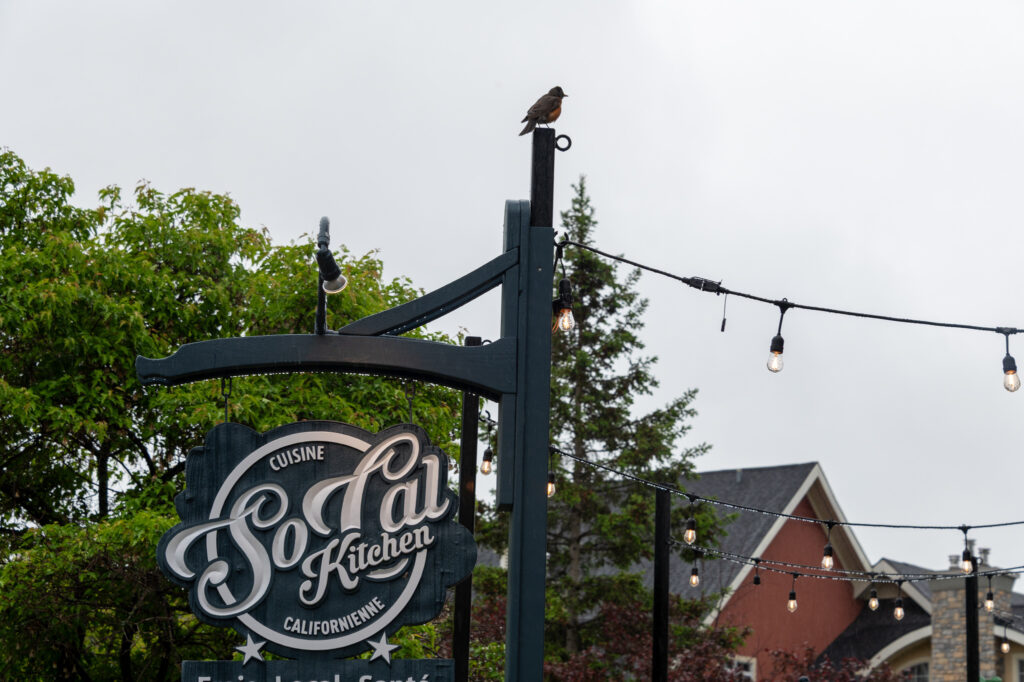
In the next post, I’ll talk about little about the woodland and nature in the mountains.

